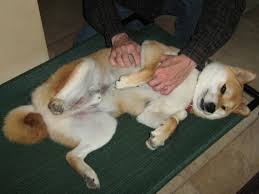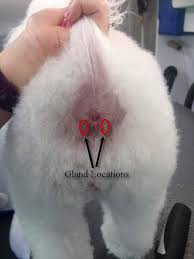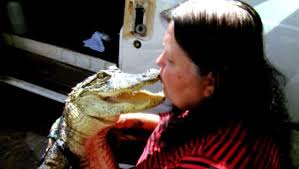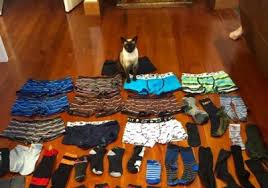Intimate Journey Into the World of Sloths
Sam Trull, Sloth Love
 Most every social media butterfly has seen at least one cute video of a sloth (If not, check out our Facebook page!). These litter critters are so cute, that many people want one as a pet. However, sloths are a wild animal and are illegal to own.
Most every social media butterfly has seen at least one cute video of a sloth (If not, check out our Facebook page!). These litter critters are so cute, that many people want one as a pet. However, sloths are a wild animal and are illegal to own.
Photographer Sam Trull says she "went to Costa Rica for the primates but stayed for the sloths." She has the lowdown on sloths, and she says people think they're slow. However, she says "they can be fast when they want to and their nails are pretty scary too."
Sam tells us that sloths belong to the xenarthran family and are most closely related to armadillos and anteaters. They are an arboreal mammal and live solely in the trees and can't live without them. As a result, they wouldn't make great pets anyway as they couldn't live in a house.
Sloths only eat leaves, and in fact, three-toed sloths are not found in captivity (zoos, etc.) outside of their habitat country because they wouldn't survive. They get too stressed out and no one can get their diets correct. So how can you tell when a sloth is stressed out when they have a permanent smile on their face? That is the hard part!
You can, however, find some two-toed sloths in zoos. These sloths can be extremely dangerous and have a pretty bad bite.
 When Sam first came to Costa Rica, she started working with an organization called, "Kids Saving the Rain Forest." They also have a wildlife rescue center there and this is where Sam first fell in love with sloths.
When Sam first came to Costa Rica, she started working with an organization called, "Kids Saving the Rain Forest." They also have a wildlife rescue center there and this is where Sam first fell in love with sloths.
When she started working with sloths, she realized that there was such a great need to study and learn more about them. They also need to figure out how to release a "hand-raised" sloth and to monitor them upon their release into the wild. While some two-toed sloths in zoos have lived into their forties, the best guess for their lifespan in the wild is around 20 years.
In August of 2014, Sam co-founded the Sloth Institute Costa Rica whose vision is to enhance and expand scientific knowledge about sloths to assure their global conservation and preservation.
Sam shares intimate portraits of these captivating and endearing animals from her unique perspective as their protector, adopted mother and friend in her book, "SLOTHLOVE."
Visit Website
The Weekly "Once-Over" Part II
Doc Halligan, Lucy Pet Foundation
 Last week, Doc Halligan taught us how to give our pet a weekly check up. She stated that knowing exactly what to look for could mean the difference between life and death and that early detection gives you the best odds when it comes to your pet's health.
Last week, Doc Halligan taught us how to give our pet a weekly check up. She stated that knowing exactly what to look for could mean the difference between life and death and that early detection gives you the best odds when it comes to your pet's health.
We started with their face, which included their lips, nose, eyes and mouth. This week, we will move further down their bodies and tell you how to search for anything abnormal.
But before we start, make sure you are performing your weekly at-home exam in a good light, taking a systematic approach and doing it the same way every time so you don't miss anything. Be sure to sneak in lots of hugs and kisses so your pet learns to enjoy it; you might even find a special petting spot during the once-over.
Skin and Coat
The skin is the largest organ of the body and is also the first line of defense against disease. Look closely at your pet's skin by parting the hair in several spots or blowing gently. It should be clean and dry. Look and feel for areas of swelling, heat, scrapes, pain, hair loss, crusting, or redness. Some pets have pigmentation or freckles on their skin, which is considered normal. Now run your hands all over your pet's body, including all four legs and lift up the tail. You'd be amazed at how many animals develop tumors or infections on the underside of the tail. And don't forget to look at the tummy. (You never know - this could be a favorite spot for petting!) Check for lumps, bumps and growths of any sort. Look closely under the fur because small bumps can be hard to see. The most common sites for tumors to grow are on the skin, mouth, mammary glands and lymph nodes. Check under the coat for flakes, ticks, fleas and flea dirt - small flecks of black debris that look like black pepper. This is actually flea poop, and if you get it wet, it will turn red - pretty disgusting!
Your cat or dog's coat should be sleek and glossy, not dull, dry or greasy. Run your fingers through your pet's hair. There should be no buildup or odor on your hands. Also check between the toes and look at the pads. Dogs and cats can get burrs, gum and other foreign objects lodged there. During the summer months, dogs can easily burn their pads.
Proper hydration is very important. A good check to see if your pet is drinking enough water and is adequately hydrated is to gently pull up on the skin over your pet's shoulder blades, then release the skin. If your pet is hydrated, the skin will snap back quickly into position. If your dog or cat is dehydrated, it will take much longer for the skin to release; sometimes, it will even stay tented up. This can be a serious problem and requires a phone call or a trip to your vet right away.
 Anal Glands
Anal Glands
The anal glands are two small dime-sized sacs located on either side of the rectum, at the four o'clock and eight o'clock positions and are found in a variety of animals. Their biological function is to impart a distinct odor to the stool that is unique to pets, and consequently they serve very little purpose in domesticated dogs and cats. This odor is very foul and pungent. The secretion from the glands are normally expressed when a pet has a bowel movement or is frightened, due to tightening of the rectal muscles. However, if the stools are too soft or too hard, or the substance in the gland is too thick, the glands will not get expressed and can get very full or become abscessed and impacted, causing pain and discomfort. A small percentage of dogs and cats genetically produce anal gland secretions that are too thick to pass through the small ducts that extend from the sacs to the anus.
When the glands become full or impacted, pets may scoot on the ground, lick their anal area or exhibit strange behavior such as tail chasing, reluctance to allow you to touch their tail or rear end, reluctance to lift the tail or circling; sometimes cats will groom themselves excessively beneath the tail. At this point the glands need to be manually emptied, usually by your veterinarian, although many groomers are adept at expressing the anal glands. If the glands are infected, antibiotics may be necessary.
Toenails
Keep those toenails short. Dogs and cats with overgrown nails are like women in stiletto heels. Walking is very difficult, and lameness, bone, or joint problems can occur as a result. Also, the nails can grow so long that they curl under the foot, embedding into the pads or skin, which is extremely painful for your pet. Nail trims need to be done regularly, depending on how active your pet is and how fast its nails grow. You should have your cat or dog's nails trimmed on a regular basis, either at a vet hospital or a groomer's. If you want to attempt it yourself, have a professional teach you how. Cats and dogs can get quite ornery if it isn't done properly, and accidentally cutting the nail too short will result in lots of pain and bleeding. Its best to start trimming your pets nails early on, as a puppy or kitten, to get them use to this routine grooming procedure.
 Weight
Weight
Last but not least, check for weight gain or loss. This can be crucial in determining early signs of disease or illness. I recommend weighing your pet weekly. Using your home scale, just weigh yourself holding your pet and then subtract your weight that day. Even just a few extra pounds can be significant in animals, leading to arthritis, heart disease, diabetes, and breathing difficulties. Chances are if you can pinch an inch, your pet is overweight and you should see your vet to get started on a weight loss program. Some longhaired cats and dogs can appear healthy, when in reality they have lost weight, but because of their luxuriant coat, the loss may not be readily apparent. Catching weight loss or gain in the early stages is far better than waiting until it has progressed to something more serious that's much harder to treat.
Again, be aware of what's normal for your pet, so when changes occur, you can address them immediately by calling or visiting the vet to get the problem checked out and treated before it becomes severe.
The Mission of The Lucy Pet Foundation is to reduce pet overpopulation by having mobile spay/neuter clinics across the country and to support causes that benefit animal welfare. The Lucy Pet Foundation not only offers free and reduced spays and neuters, they also do microchipping, vaccines and de-wormings. Spaying and neutering is not only great for pet population control, but it has been proven that an animal will live on an average of 40-percent longer after having this surgery.
Visit Website
Get Your Pet To the Vet Safely with No Escapees - Dr. Debbie
 A frightening situation occurred at my veterinary hospital. Working inside my office, I heard a woman's shrieks coming from the parking lot. I ran outside to find a woman with one dog on a leash, and the other dog skittering about the parking lot - the result of a slipped collar. The owner would approach the panicked dog and he'd retreat, darting under nearby cars. Those familiar with our hospital location understand its proximity to a busy intersection. Should the dog run in the wrong direction, he'd meet up with 45 mph traffic.
A frightening situation occurred at my veterinary hospital. Working inside my office, I heard a woman's shrieks coming from the parking lot. I ran outside to find a woman with one dog on a leash, and the other dog skittering about the parking lot - the result of a slipped collar. The owner would approach the panicked dog and he'd retreat, darting under nearby cars. Those familiar with our hospital location understand its proximity to a busy intersection. Should the dog run in the wrong direction, he'd meet up with 45 mph traffic.
My staff was outside in moments to assist the owner in retrieving her dog and safely escorted everyone into the building. Thankfully, my client's few minutes of terror ended uneventfully. But that's not always the case. I've seen dogs run straight into the road, cat's leap from a family member's arms, and owners dive into oncoming traffic trying to catch an escaping pet.
The lesson is simple. Don't underestimate your pets' fears. Fear of car travel, new places or the veterinary office can cause a pet to behave in unpredictable ways. If you know your pet to be nervous with new people or new situations, be especially vigilant when transporting your pet in a vehicle.
Identify Your Pet
Use two methods of identification for best insurance your pet is returned to you if lost. Permanent identification with a microchip is a must and should be complimented with a collar and ID tags.
Restrain Pet in Vehicle
Keep your pet secure during travel and when the car door opens by using a doggie seatbelt. Small dogs and cats should be housed in a pet carrier which is secured with seatbelt to avoid undue carrier movement during travel. Do not allow cats and small pets to roam freely in the car. Cats have been known to take cover under car seats which may require sedation or seat removal to extract kitty from her hiding place.
Check for Proper Fit


 A proper fitting collar allows 2 finger widths between the collar and pet's neck. Allow more than, and should your pet put on the brakes, he'll easily slip out of the collar. Poor fitting harnesses are just as dangerous and allow gap room which allows a back-peddling pet to wiggle out. Not sure if the collar is too loose? Snug the collar up one fitting in anticipation of your trip to the vet.
A proper fitting collar allows 2 finger widths between the collar and pet's neck. Allow more than, and should your pet put on the brakes, he'll easily slip out of the collar. Poor fitting harnesses are just as dangerous and allow gap room which allows a back-peddling pet to wiggle out. Not sure if the collar is too loose? Snug the collar up one fitting in anticipation of your trip to the vet.
Try Other Collar Styles
Even if you don't normally use a choker or pinch collar, consider using one when going to the vet's office. For thick necked dogs with smaller head size, try the Martingale collar, a fabric and metal combo collar that snugs down should your dog try to back out. Boisterous dogs that jump and leap when on leash may benefit wearing a head collar that fits over the muzzle. Ensure your collar choice is properly fitted, since any of these styles can fail if improperly fitted or used incorrectly.
Call Ahead
If you anticipate difficulties getting your pet to the vet's office, call ahead. Veterinary staff members are on the ready to help ensure your pet's visit is a safe one.
So, take a few minutes to consider your pet's travel safety before heading out on that next car trip, whether it is to the park, groomer or veterinary office. Your four legged friend will thank you, but may pout on the way there.
Featured veterinarian known as "Dr. Debbie" on national pet radio program, Animal Radio. Ebook author of "Yorkshire Terriers: How to Be Your Dog's Best Friend"; "Pugs: How to Be Your Dog's Best Friend"; "Mini Schnauzers: How to Be Your Dog's Best Friend"; and "Shih Tzu: How to Be Your Dog's Best Friend." Dr. Debbie's books.
Visit Website
5 Pets That Are Illegal To Own
Robert Semrow, Animal Radio Listomania
 Ok, I know what you are thinking… If they are pets, they are certainly legal. Well, that's not necessarily the case depending on the state or city that you live in. There can be legal issues for having common pets that exist in different states or cities.
Ok, I know what you are thinking… If they are pets, they are certainly legal. Well, that's not necessarily the case depending on the state or city that you live in. There can be legal issues for having common pets that exist in different states or cities.
Let's start with Ferrets. In several states and large cities (Including California, Hawaii, New York City and Dallas to name a few), ferrets are illegal and if caught, you could face fines up to $200K or even prison time. That's right, ferrets; the court jesters of the animal world, filled with curiosity and enough cuteness to power any world are illegal in certain places. Some states allow you to have them as pets, but require additional filings and you must meet certain requirements.
Next up is Gerbils. If you are in California, you may be surprised to know that your state does not allow gerbils as a pet as they are deemed to pose a threat to the eco system. These tiny palm-sized pets are common household pets in many areas of the U.S. as they are easy to care for and handle, while also being social creatures.
Next is the Hedgehog - No, I'm not talking about the video game version but the super cute, albeit very spiny hedgehog. These fascinating and easy to care for animals have very simple needs and are quite adaptable. They are interactive, yet, if handled improperly can use their quills to get their point across. Yes, I went there. The bigger concern is that there are certain states and municipalities who deem them illegal as pets and/or have severe restrictions including California, Georgia, Hawaii, Pennsylvania and more.
 Let's not forget that there are number of fish and snakes that are also illegal to own in various states through the United States. It is remarkable the variety of these species that are found legally in the homes of people in some states, while not allowed in the homes in other states.
Let's not forget that there are number of fish and snakes that are also illegal to own in various states through the United States. It is remarkable the variety of these species that are found legally in the homes of people in some states, while not allowed in the homes in other states.
Finally, I would be remiss, to not bring up the troubling movement to ban certain breeds of dogs and cats in cities and states across the country. From Bengal Cats to Pit Bull Dogs, traditional pets are increasingly under the scrutiny of the legal system.
While this list could go on for many days, I bring it up as a reminder that while you have rights, states and cities have laws. I'm not saying these laws or regulations are right or wrong. I am saying consider this when you are looking at adopting a new animal family member and remember that you are responsible to know the laws where you live in regards to your animal family members. Don't make the mistake of assuming anything or you may find yourself in big trouble and your pet confiscated or worse.
Share your pet legal stories on our Animal Radio Facebook Page.
http://petworldinsider.com
Animal Radio News - Lori Brooks
 Doggy DNA Nabs Poop Offenders
Doggy DNA Nabs Poop Offenders
A luxury apartment community near Grand Rapids, Michigan uses DNA technology as a way to sniff out dog owners who fail to pick up their pets' poop. The complex asks dog owners to swab their pet's mouth so it can build a DNA database that will allow it to identify residents who ignore its strict cleanup policy. The management company has already contracted with the Tennessee-based company PooPrints to collect DNA samples of each dog in the development. It's estimated that about 60-percent of the apartment residents own a pet. From now on, if a doggie do-do pile is found on the grounds, a sample of it will be sent to PooPrints, where it will be matched to the offending dog and owner. Violators will face a $350 fine.
We Know Why Cats Love Boxes!
Anyone who has spent time with cats knows how they love to find their way inside boxes, but there's actually a scientific explanation behind the attraction between cats and boxes. According to the folks at WIRED, cats are naturally wired to like small, closed in spaces; it's their natural animal instinct for safety and security. Also, a cat, entering an enclosed space has an adaptive coping mechanism that serves to reduce its stress and give it time to sort things out. And, there is also a physiological reason your cat prefers small area like boxes: cats temperatures run a bit cooler than humans so cats prefer a warmer environment. Seeking out a snuggly box or contained area allows it a cats on body heat to warm up a small space and keep it toasty warm.
 Woman Gained Support To Keep Pet Alligator
Woman Gained Support To Keep Pet Alligator
A community came together in support of a Lakeland, Florida, woman who was fighting to keep her pet alligator that she's been a mother to for years. The Florida Fish and Wildlife Conservation Commission said there was a licensing issue. According to authorities, a large pet alligator must live on two-and-a-half acres or more of land. His owner said her alligator never lived in the wild and had already developed sensitivity to sunlight by the time she rescued him many years ago.
Average Size of Dogs Are Shrinking
A study from the University of Sydney stated the average size of a dog was shrinking because more pet owners prefer smaller dogs as companions. Researchers analyzed nearly three decades of registrations to the Kennel Club, a UK based dog welfare organization. They found dog lovers are also increasingly opting for bulldogs and pugs because of their large heads. The popularity is said to be driven partly by their big eyes and chubby cheeks that trigger the same "caretaking behavioral responses" that adults have towards babies. The lead researcher said they also found that the demand for smaller dogs has increased every year from 1986.
 This Cat's Got More Than Your Tongue
This Cat's Got More Than Your Tongue
A pet feline in New Zealand had been stealing men's underwear and socks from other people's homes. In just 2 months, the 6-year-old cat named Brigit, acquired 11 pairs of underwear and more than 50 pairs of socks. Brigit's owner said she put notes in every mailbox on her street to warn her neighbors. One day Brigit came in from being outdoors, very motherly carrying a sock like it was a kitten.
Pet Cemeteries Popular in China
Pet cemeteries are increasingly popular in China with owners paying a lot of money to bury their animals. It costs between 50 and 1,800 dollars for an owner to buy their pets a plot in Chinese pet cemeteries. Rows of tombstones at one cemetery bear the names of pets along with flowers, toys, food and even calcium pills and chew bones were seen placed beside them. Pet owners who wish to give their animals a more formal send off can opt to bury their animal under the roots of trees or in a single grave. They can also opt for cremation.
 Listen to the entire Podcast of this show (#1181)
Listen to the entire Podcast of this show (#1181)





